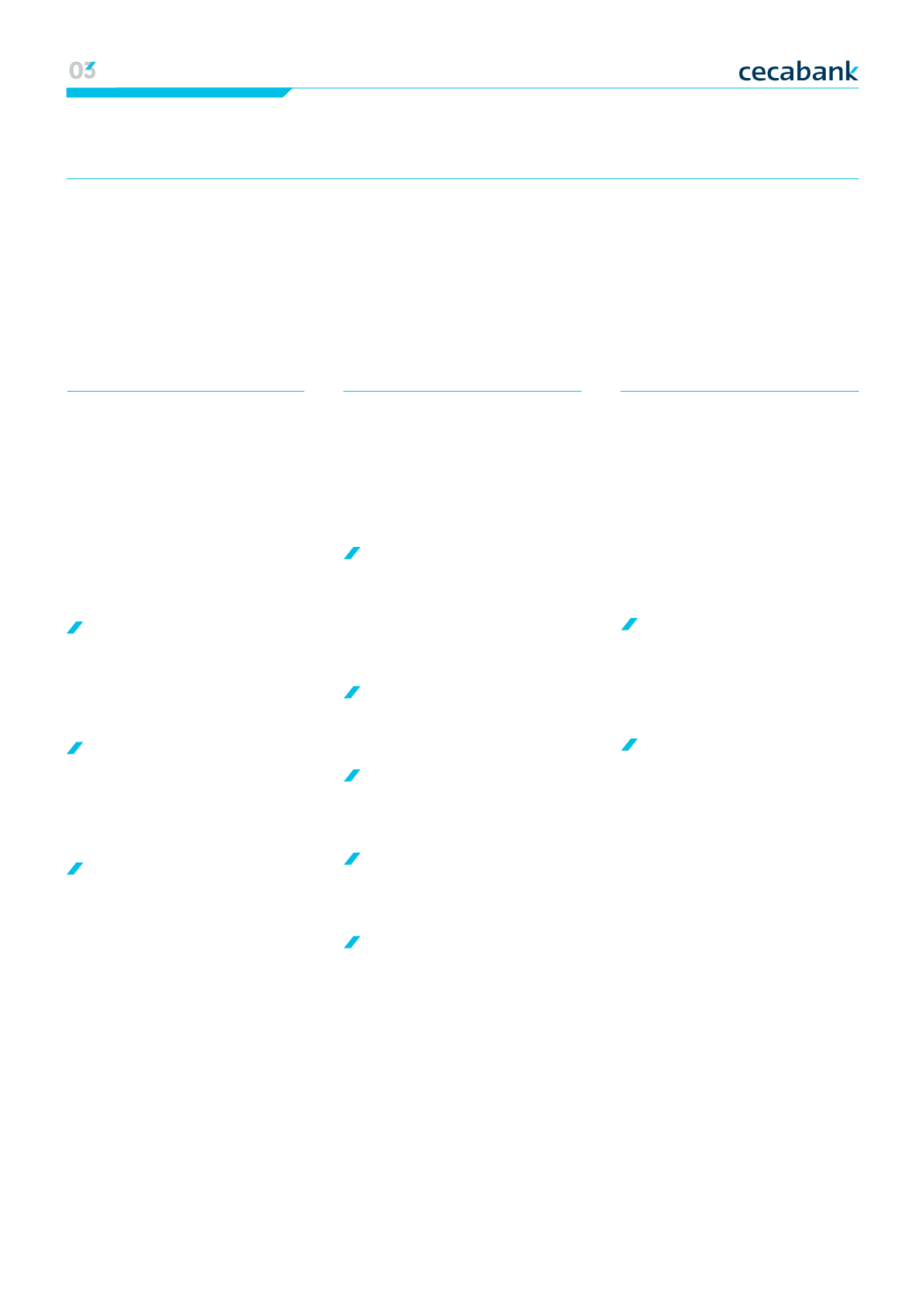

42
Single Resolution Mechanism
This aims to equip the ECB’s new
supervisory role with the necessary
powers to resolve credit institutions,
given that supervision without the
capacity to intervene would limit the
new institutional framework’s cre-
dibility. Its perimeter of application
therefore coincides with that esta-
blished in the SSM. Other significant
features of the SRM are:
It makes use of the tools
provided by the Bank
Recovery and Resolution
Directive, specifically those
regarding the
bail-in mechanism;
Decision-making procedures
have been made more
flexible, such that an
intervention decision may
be adopted over the course
of a weekend;
It envisages endowment of a
resolution fund, based on
:
•
A target volume
of 55 billion euros
•
A rapid process of pooling
of national funds (8 years
with 60 percent covered in
the first two years).
It is due to come into force on 1
January 2016, except for certain
specific issues that were brought
forward to 1 January 2015 (such
as the setting up of the Single
Resolution Board, which has already
been approved).
SRM
Deposit Guarantee Fund
A big step forward has been taken
with the passing of a new Deposit
Guarantee Fund Directive, which
paves the way for a European fund
in the medium term. The main
features are:
Generalisation of the “ex ante”
contribution model rather than
the “ex post” model, although it
is softened by the option of up
to 30 percent of contributions
taking the form of collateralised
payment commitments;
Uniform Europe-wide
target for fund endowment
(target level of 0.8 percent of
deposits covered);
Introduction of a risk factor
in the contributions (leaves
how it is set for the national
authorities to decide);
Shortening of time taken
for depositors to be paid
to a maximum of seven
business days;
Setting of a maximum time
limit in which to achieve the
coverage target (ten years,
to 2024).
Entails the main role of the Eu-
ropean Banking Authority (EBA),
which is responsible for providing
harmonised prudential rules for the
EU’s financial institutions.
The single rulebook is essential to
guarantee equal conditions in the
European market.
Several challenges remain on the
horizon, including:
Divergences in RWAs
(risk-weighted assets)
between banks in different
countries, which is being
addressed by both the EBA
and the Basel Committee;
The need to standardise
accounting practices
in Europe.
DGF
THE “SINGLE RULEBOOK”
Our Business Model Annual Report 2014 00 Strategic lines | Economic and regulatory context | Strengthening our model|
Business lines 01 Financial information|
Profit & loss | Activity|
Capital base | Ratings 02 Risk management | The Cecabank risk function


















